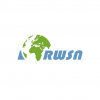Groundwater
"Water that fills voids, cracks, or other spaces between particles of clay, silt, sand, gravel or rock within a saturated zone or formation (aquifer) below the soil surface." (Virginia Polytechnic Institute and State University, n.y.)
“Groundwater is fresh water (from rain or melting ice and snow) that soaks into the soil and is stored in the tiny spaces (pores) between rocks and particles of soil. Groundwater accounts for nearly 95 percent of the nation’s fresh water resources. It can stay underground for hundreds of thousands of years, or it can come to the surface and help fill rivers, streams, lakes, ponds, and wetlands. Groundwater can also come to the surface as a spring or be pumped from a well. Both of these are common ways we get groundwater to drink. About 50 percent of our municipal, domestic, and agricultural water supply is groundwater. “ (EPA New England & of Site Remediation, n.d.)
“Groundwater is Earth's largest reservoir of fresh, liquid water. Accounting for more than 20% of water usage worldwide and 43% of irrigation water (Earman & Dettinger, 2011; Fetter, 2001; Zektser & Everett, 2004), groundwater serves as the primary source of freshwater for over 2 billion people across the globe (Alley et al., 2002; Famiglietti et al., 2011; Gleeson et al., 2012; WWAP, 2015). “ (Adams et al., 2022)
Virginia Polytechnic Institute and State University. "A Glossary of Water-Related Terms", by Brian Benham. Publication 442-759
Adams, Kyra H., John T. Reager, Paul Rosen, David N. Wiese, Tom G. Farr, Shanti Rao, Bruce J. Haines, et al. 2022. “Remote Sensing of Groundwater: Current Capabilities and Future Directions.” Water Resources Research 58 (10). John Wiley & Sons, Ltd: e2022WR032219. doi:10.1029/2022WR032219.
EPA New England, Us, and Office of Site Remediation. 2025. “Groundwater.” Accessed September 22.
Related Content
Article
Technologies Spatiales pour la Détection, la Surveillance et la Gestion des Eaux Souterraines
Les réserves mondiales d'eau souterraine
Les eaux souterraines représentent 30 % des ressources en eau douce de la planète (Shiklomanov 1993) (figure 1) et fournissent au niveau mondial 36 % de l'eau potable, 42 % de l'eau d'irrigation et 24 % de l'eau industrielle, témoignant de leur valeur considérable (Global Environment Facility 2021).
Space-based technologies and data complementing GRACE datasets for groundwater assessments and monitoring
With increasing populations, groundwater abstraction also increased as about half of the global urban population access their water through aquifers (Foster et al., 2020). With 74% of the world population depending on it for safe drinking water services and sanitation (WHO and UNICEF, 2021), groundwater plays a vital role in health.
Technologies Spatiales pour la Détection, la Surveillance et la Gestion des Eaux Souterraines
Les réserves mondiales d'eau souterraine
Les eaux souterraines représentent 30 % des ressources en eau douce de la planète (Shiklomanov 1993) (figure 1) et fournissent au niveau mondial 36 % de l'eau potable, 42 % de l'eau d'irrigation et 24 % de l'eau industrielle, témoignant de leur valeur considérable (Global Environment Facility 2021).
Space technologies in the detection, monitoring and management of groundwater
Global groundwater supplies
Groundwater accounts for 30% of Earth’s freshwater resources (Shiklomanov 1993) (Figure 1) and is estimated to globally provide 36% of potable water, 42% of irrigation water, and 24% of industrial water – indicating its significant value (Global Environment Facility 2021). Groundwater affords a host of benefits, from providing better protection against drought and microbiological contamination than surface waters, to being generally low cost and accessible to many users.
Space technologies in the detection, monitoring and management of groundwater
Global groundwater supplies
Groundwater accounts for 30% of Earth’s freshwater resources (Shiklomanov 1993) (Figure 1) and is estimated to globally provide 36% of potable water, 42% of irrigation water, and 24% of industrial water – indicating its significant value (Global Environment Facility 2021). Groundwater affords a host of benefits, from providing better protection against drought and microbiological contamination than surface waters, to being generally low cost and accessible to many users.
Capacity Building and Training Material
Event
Local Perspectives Case Studies
Project / Mission / Initiative / Community Portal
Stakeholder
Person

Hafsa Aeman
Senior Research Officer - Geoinformatics, CGIAR International Water Management Institute
Hafsa Aeman is a Senior Research Officer at the International Water Management Institute (IWMI) in Pakistan. In this capacity, she is deeply involved in various projects, notably the Water Resource Accountability in Pakistan (WRAP) and NEXU Gains initiatives, both supported by the UK Foreign, Commonwealth, and Development Office (FCDO). These projects are geared towards augmenting capacity for water resource management at the provincial and district levels.

Benjamin Wullobayi Dekongmen
PhD Candidate University of Energy and Natural Resources
Benjamin is a poised and passionate Geospatial enthusiast and Environmental Hydrologist with a strong research focus on Groundwater Recharge, Flood Risks Terrain and Climate Change modelling. He has a wide range of expertise in GIS and Remote Sensing, Soil and Water Assessment Tool (SWAT), Python, and Google Earth Engine.

Claudia Ruz Vargas
Researcher International Groundwater Resources Assessment Centre
Claudia Ruz Vargas is a researcher at the International Groundwater Resources Assessment Centre (IGRAC), in Delft, the Netherlands. Through her work at IGRAC, she became a steward for the Essential Climate Variable (ECV) Groundwater at the Global Climate Observing System (GCOS), a programme co-sponsored by the World Meteorological Organization (WMO), the Intergovernmental Oceanographic Commission of UNESCO (IOC-UNESCO), UN Environment, and the International Science Council (ISC).






























































